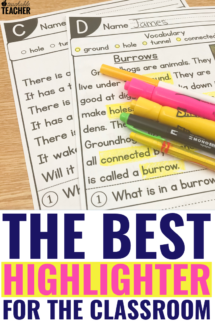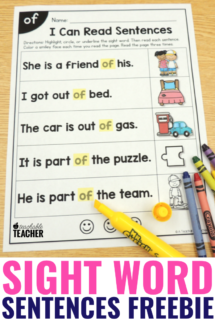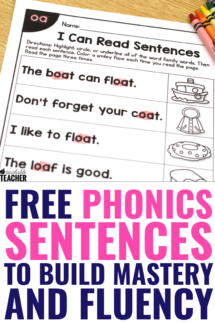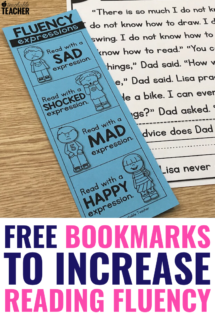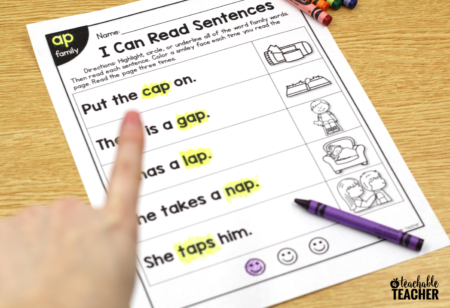Teaching reading expression to new readers is really important, but it can be challenging. These free bookmarks and mini lesson idea create an engaging and fun way to incorporate reading with expression into reading fluency.
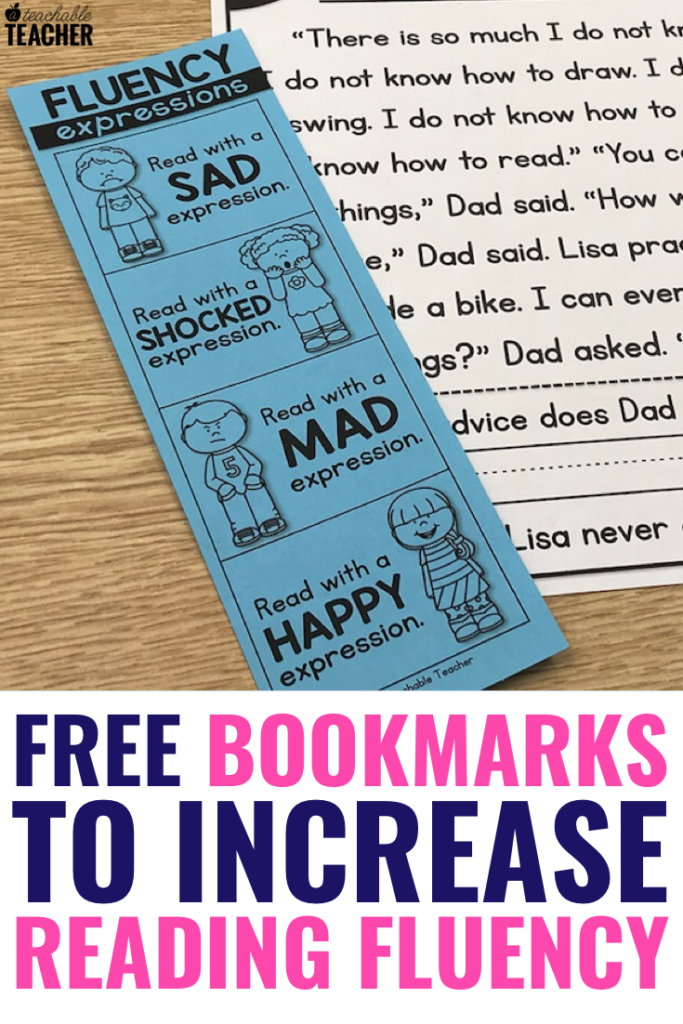
This post contains affiliate links. By purchasing through this link, we get a small commission. Rest assured – we only share links to products that we know and love!
We’ve all listened to our student be robotic readers, am I right?
And sometimes it’s painful to listen…but then you remember that they’re reading (Yay!) and so you push through.
But as some point, we have to teach them about fluent reading, and how that involves reading with expression.
Free Fluency Bookmarks for Teaching Reading with Expression
Explicitly teaching fluency is so important.
It is the bridge between word recognition and comprehension. 🌉
Woah. 🤯
If we want our students to understand what they are reading, they need to be fluent readers.
Fluency is made up of three things:
- Rate: The speed at which one reads
- Accuracy: The ability to read words automatically and correctly
and my personal favorite to teach: - Expression: Using proper intonation, phrasing, and expression when reading
Today, I’ll be sharing a mini lesson and free activity you can use to teach fluent reading with expression!
10 Reading with Expression Mini Lesson Idea
One of the best ways to explicitly teach students is by providing non-examples.
Seriously, non-examples are my favorite. They’re so effective.
So during read aloud, I pick up a book…
…and I read it as robot-y and boringly as humanly possible. 🤖
And I watch as their faces look confused and I try my hardest not to laugh. #pokerface
Then I stop and lead a super short discussion.
Why were all of you looking at me funny?
Is there leftover lunch on my face?
Do you not like this text?
I let my students come to the conclusion that I was not reading like I normally do.
What’s missing?
I guide our discussion so it casually leads them to the topic of expression.
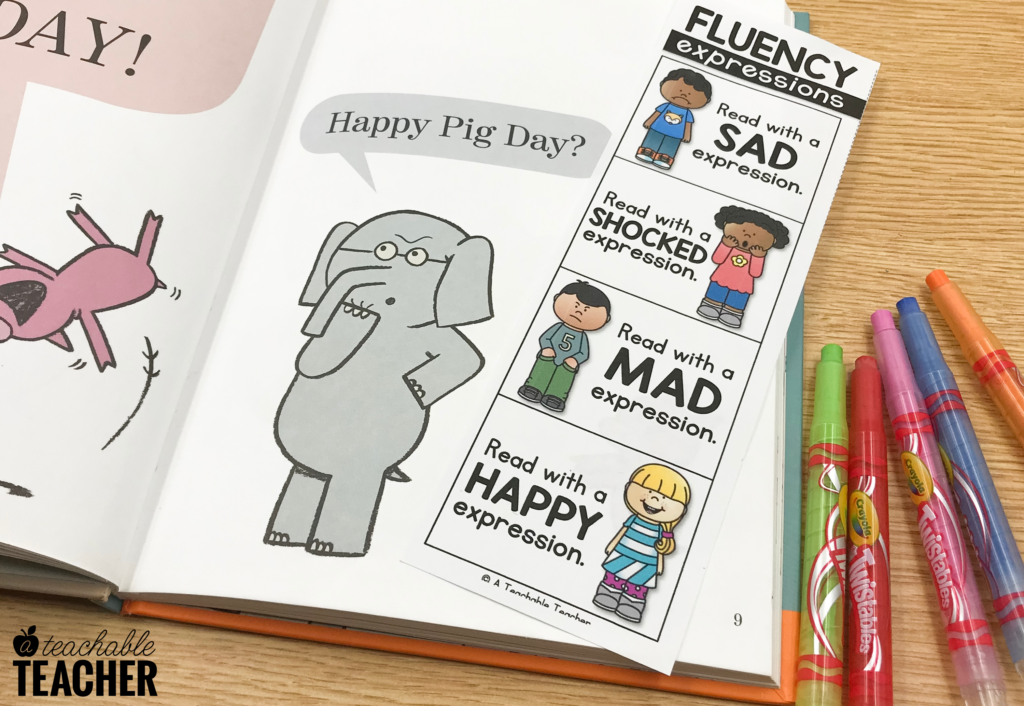
We talk about the way our voice changes when we ask a question, the way we sound if we are happy or sad, and what makes our feelings believable when we are reading.
I explicitly teach them that part of being a fluent reader is reading with expression.
Then I continue to read the book, but now with expression, and they clap and applaud and tell me what a great and fluent reader I am. 🥳
Free Fluency Bookmarks
Then…I give them the chance to practice reading fluently with expression.
I give them each a fluency expression bookmark.
Each bookmark includes four different emotions, including matching clip art images.
We discuss how these aren’t the only expressions we use when reading, but they are expressions that they can all relate to.
We practice our sad face, our shocked face, our mad face, and our happy face. And we discuss what we might say with each of these emotions, and how we might say it is as well.
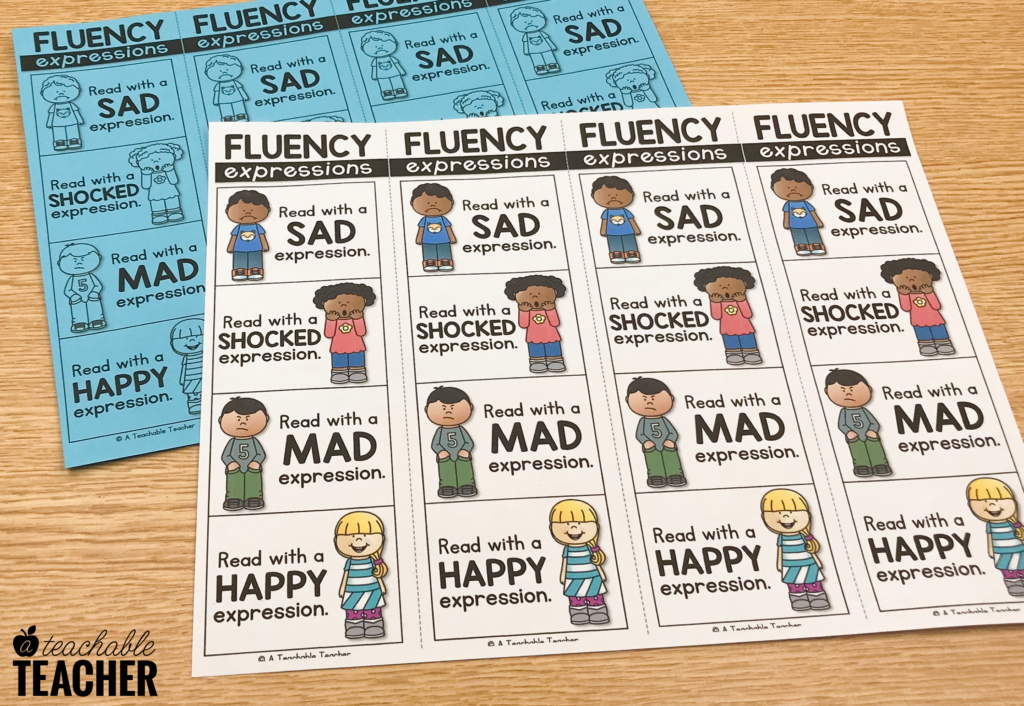
Then I model reading a sentence from the book with each of these expressions.
I follow a I Do – We Do – You Do method.
I read the sentence with expression, then we all read it aloud together with expression, and then I call on a few students to read it aloud to us, with expression.
Once we get the hang of it, students take their bookmarks to their seats to practice with their partner.
Assign students either a line of text to read, a page of text read, or one small book to read. Make sure it is a text that they can already read accurately and automatically.
In other words, you want to use text below or at their independent reading level.
Give each of your students a bookmark and the text.
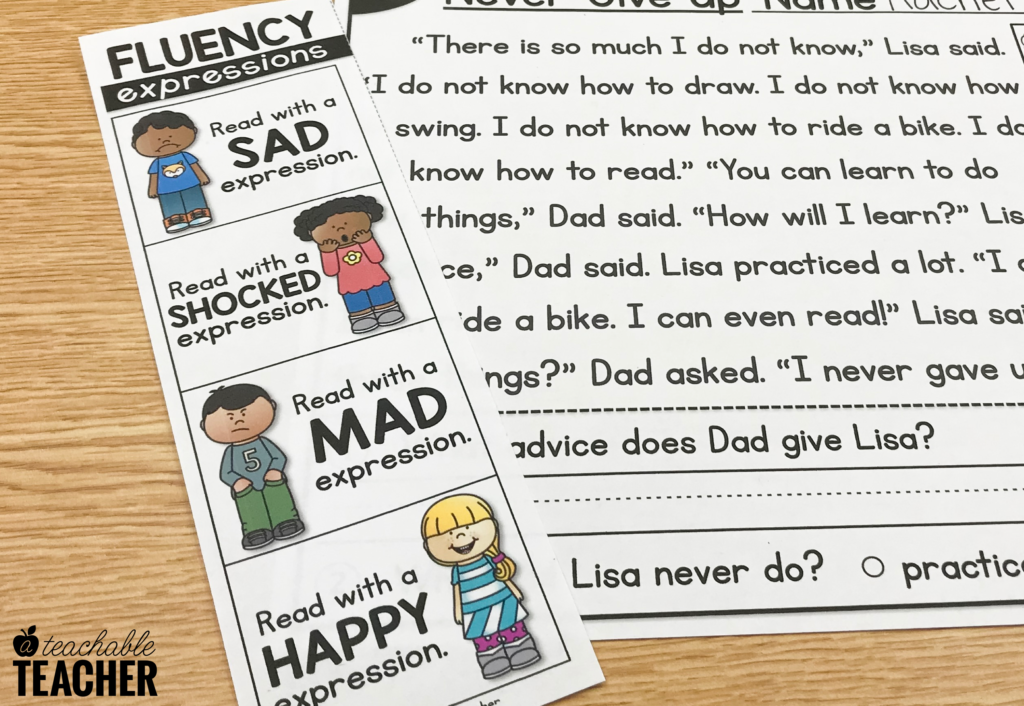
Students reread the text with the next expression detailed on the bookmark each time they read.
When the activity is complete, they will have built fluency by reading the text four times, and they will have practice reading with different expressions!
My students love to read to each other and cheer each other on as they practicing reading aloud with different expressions.
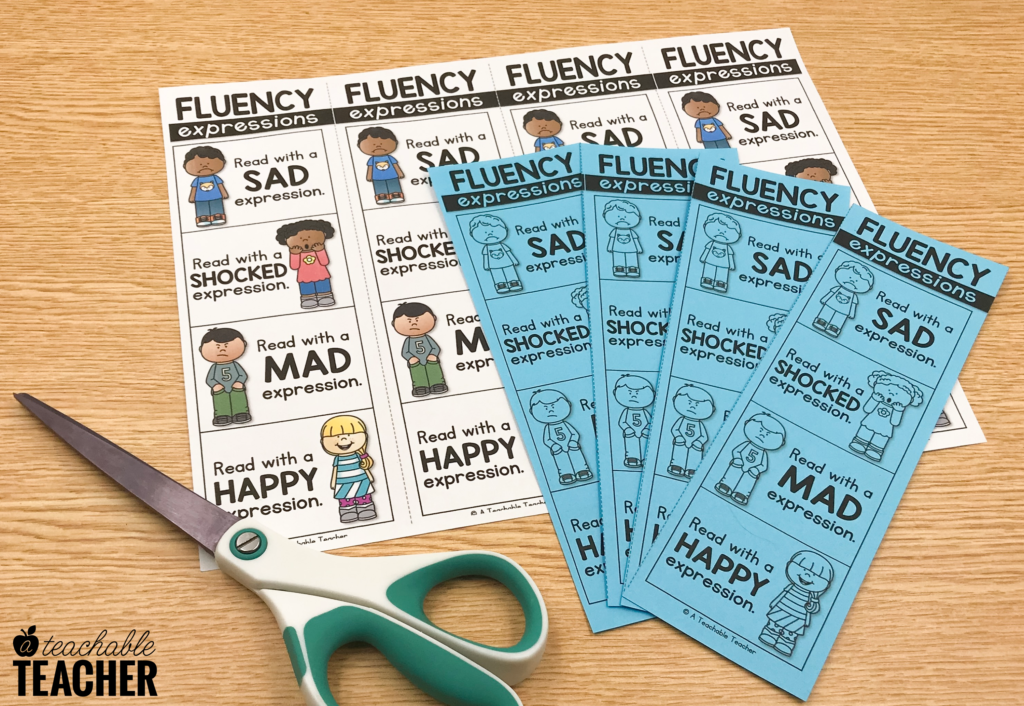
And now, you also get super expressive readers! 👏 #winning
And because of your awesome mini lesson, they’re not going to forget how important it is to read with expression. 😍
Are you reading to try this lesson in your classroom? If so, you can grab your own copy of the reading with fluency and expression bookmarks!
Download the free reading with fluency and expression bookmarks now!How do you approach teaching reading with expression? I would love to hear your strategies. Please share them below! 👇
Featured in this blog post:
- Happy Pig Day! by Mo Willems (We LOVE using Elephant and Piggie books for fluency practice!)
- August Kindergarten Guided Reading Passages and Questions Levels A-E

